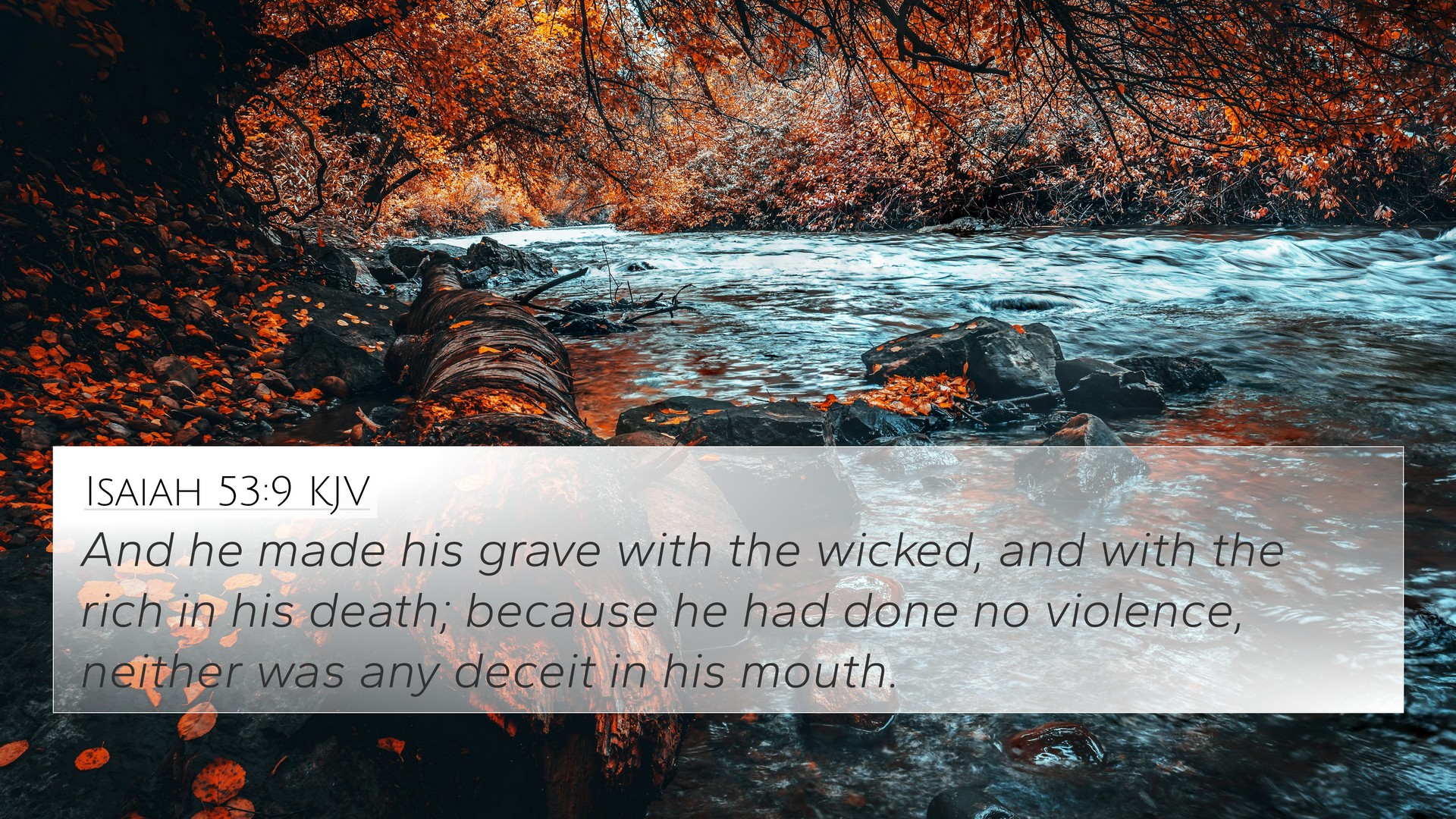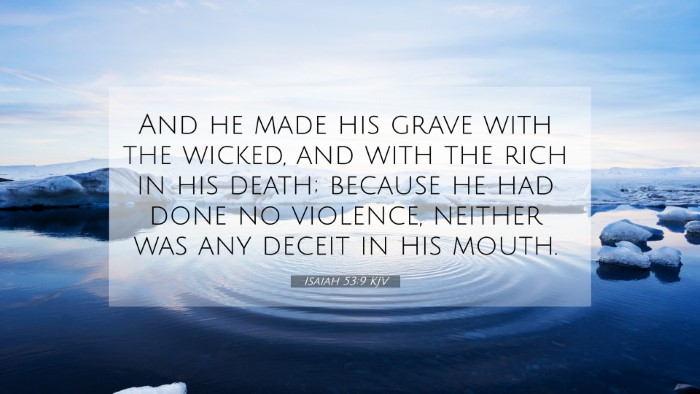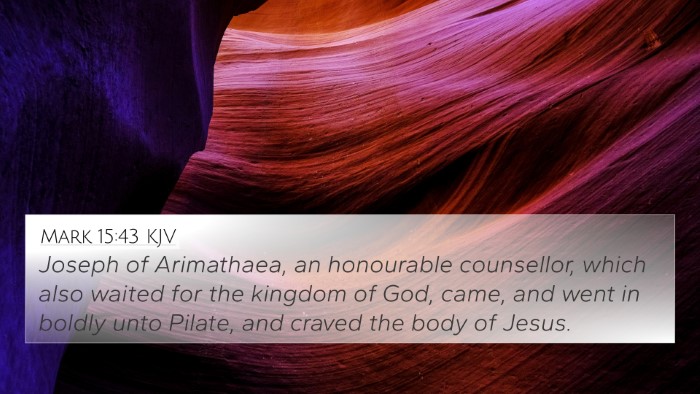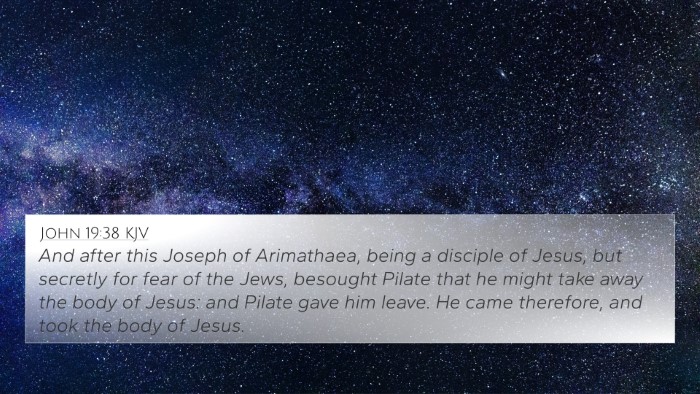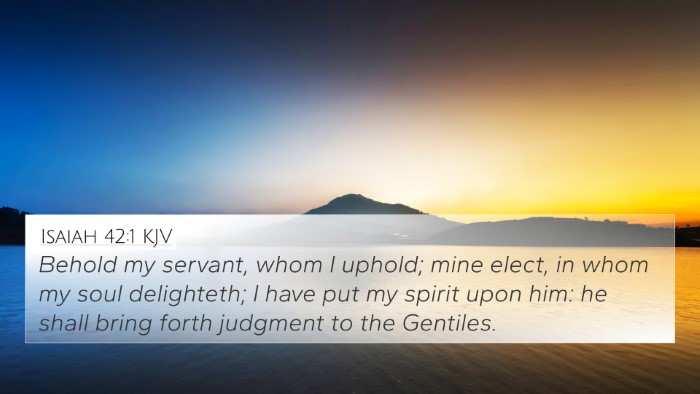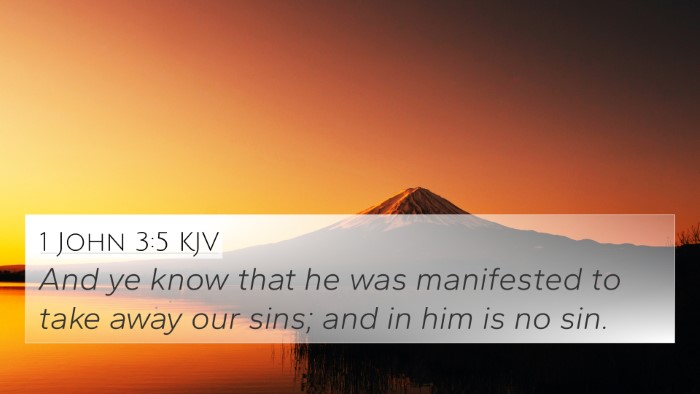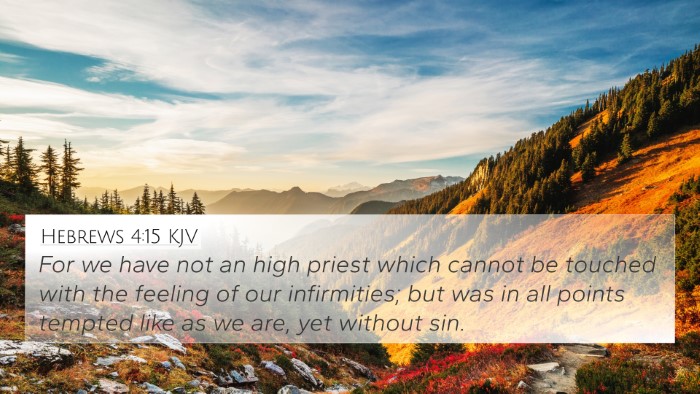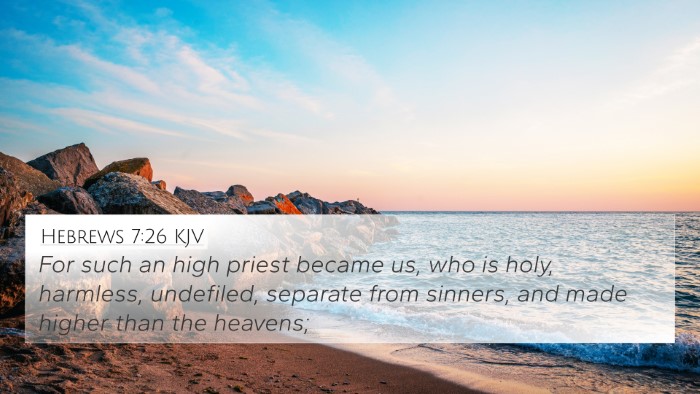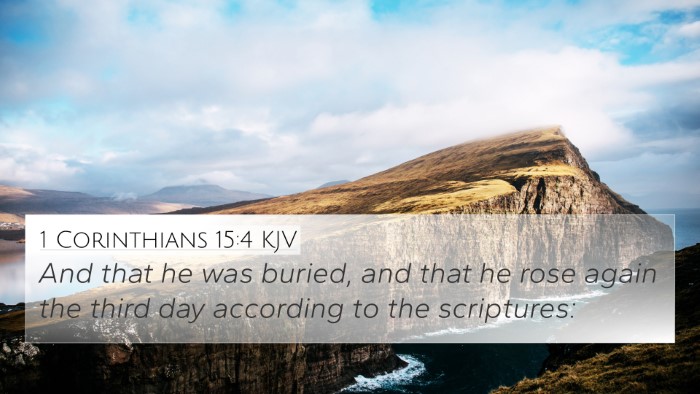Understanding Isaiah 53:9
Isaiah 53:9 is a profound verse nestled within the famous passage known as the "Suffering Servant" narrative. This verse reads:
"And they made his grave with the wicked, and with the rich in his death; because he had done no violence, neither was any deceit in his mouth."
Summary of Isaiah 53:9
This verse illustrates the unjust death of the Servant, foreshadowing the circumstances surrounding the death of Jesus Christ. The Servant is depicted as having suffered despite his innocence, being placed among the wicked yet entombed in a rich man's grave.
Key Themes Highlighted in Isaiah 53:9
- The Innocence of the Servant: The phrase "he had done no violence" emphasizes his lack of wrongdoing.
- The Suffering Majesty: The duality of death between the wicked and the rich illustrates the contrasting societal standings.
- Fulfillment of Prophecy: This verse connects to the New Testament narrative of Jesus’ crucifixion and burial, fulfilling Isaiah's prophecy.
Insights from Public Domain Commentaries
Matthew Henry's Commentary
Henry emphasizes the significance of the Servant's innocence, contrasting his state with the injustice he faced. The reference to a "grave with the wicked" signifies how the Servant was unjustly treated, while being buried in a rich man's tomb reflects the honor bestowed upon him posthumously, signifying a divine purpose behind his sufferings.
Albert Barnes' Notes on the Bible
Barnes notes that this passage highlights the suffering and death of a righteous man amid the wicked. He draws attention to the implication of the Servant's burial with the rich, which ties closely with the account of Jesus' burial by Joseph of Arimathea, illustrating how this prophecy was remarkably fulfilled in the New Testament.
Adam Clarke's Commentary
Clarke elaborates on the metaphorical language used in this verse, explaining that the 'grave with the wicked' signifies the dishonor and suffering faced by the Servant. Clarke also bridges connections within scripture, discussing how key events in Christ’s life resonate with Isaiah’s predictions.
Cross-Referencing Related Bible Verses
In understanding Isaiah 53:9, it is valuable to consider cross-references that enhance our comprehension of this passage and its implications:
- Matthew 27:57-60: Jesus' burial by Joseph of Arimathea, fulfilling the prophecy of a burial with the rich.
- Luke 22:37: Jesus citing Isaiah 53:12, further connecting his suffering to Isaiah’s prophecy.
- 1 Peter 2:22: “Who committed no sin,” echoing the innocence of the Servant in Isaiah 53:9.
- John 19:30-31: Details concerning the just nature of Christ’s death compared to the robbers crucified beside him.
- Isaiah 53:3: Describing the Servant as "despised and rejected," aligning with the theme of suffering.
- Romans 5:6: Christ died for the ungodly, reflecting the injustice highlighted in Isaiah 53:9.
- Philippians 2:7-8: Jesus' humility and obedience unto death explains his grave situation.
The Importance of Bible Cross-Referencing
Cross-referencing biblical texts like Isaiah 53:9 serves several purposes:
- It enhances understanding of the scriptures through thematic connections.
- Facilitates comparative analysis of verses that relate to key biblical themes.
- Allows the identification of parallels between the Old and New Testament.
- Serves as a study tool for sermon preparation and deeper theological reflections.
Applying Cross-Referencing in Study
When studying Isaiah 53:9, consider utilizing tools for biblical cross-references:
- Bible concordance: A valuable resource to find related verses quickly.
- Bible cross-reference guide: A structured approach to identify scripture links.
- Cross-reference Bible study methods: Various strategies to engage with scriptures.
- Bible chain references: Connecting verses together to deepen understanding.
Conclusion
Isaiah 53:9 encapsulates profound themes of suffering, innocence, and prophetic fulfillment that are crucial to understanding the narrative of the Suffering Servant. The insights from recognized biblical commentaries combined with practical cross-referencing strategies enhance our comprehension and appreciation of this significant verse within the larger framework of the biblical narrative.
